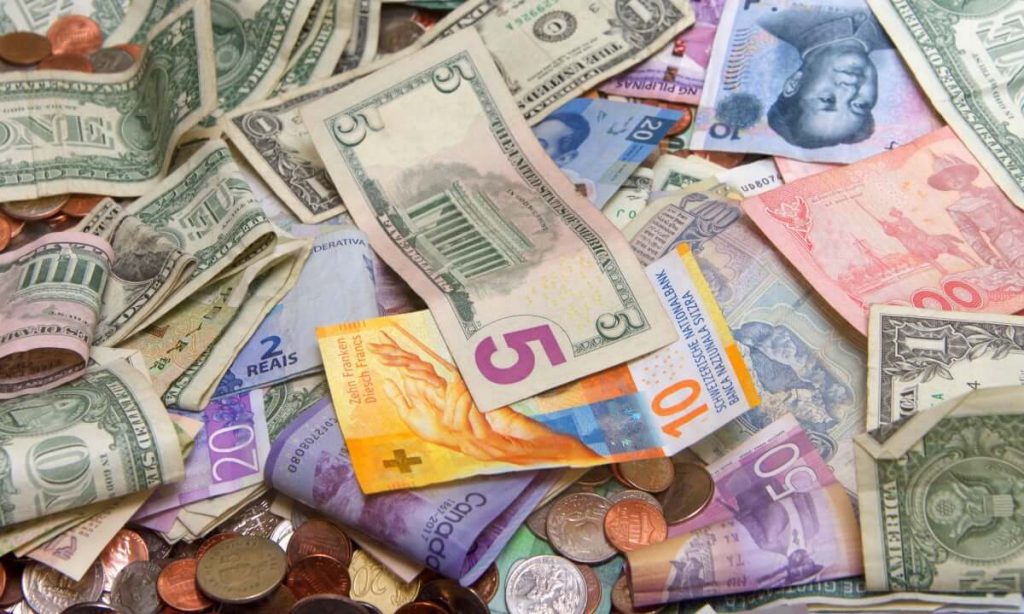
U.S. dollar and Aussie plummeted Tuesday. What about Euro?
The dollar tumbled down today, its index dropping by 0.55% at 111.12. The U.S. currency exchanged hands as high as 114.78 during the last week. However, U.S. Treasury yields remained steady on Tuesday instead of continuing to rise. This caused more subdued moves in the greenback.
MUFG analysts stated that the U.S dollar’s decrease has conceded with U.S. yields’ halt. The two moves had brought some relief for tumbling riskier assets, as well as high-beta currencies. MUFG also added that the moves in the greenback and yields seem to partially reflect traders’ greater comfort that the Federal Reserve is nearing the end of its rate hike cycle. On Monday, U.S. manufacturing data came out weak, further supporting such expectations.
U.S. yields’ relentless surge has been one factor behind the dollar’s recent rally, especially with the Fed hiking rates aggressively. However, the benchmark 10-year Treasury yield stood at 3.5815% at last, dropping sharply from last week.
While the greenback withered, the Australian dollar plunged low despite a riskier mood on the markets. The latter’s central bank announced a smaller-than-expected interest rate increase, causing the Aussie’s downfall.
The currency shaved off 0.64% at $0.6472 after the Reserve Bank of Australia hiked rates by only 25 basis points. The bank declared that it had already increased rates substantially in a short period of time.
Ray Attrill, the head of FX strategy at National Australia Bank in Sydney, noted that it seems other central banks’ actions haven’t persuaded the RBA. That’s why it doesn’t have any concerns about the exchange rate. However, other central banks aren’t going to step down from the aggressive tightening policy in the near future if their comments are any indication. Thus, it makes sense for the Australian dollar to remain below 65 for now.
How are the Euro and Sterling faring?
The common currency jumped by 0.67% to $0.9889 on Tuesday. It rebounded from its 20-year low of $0.9528 hit on September 26. The British Pound also gained to $1.1337, climbing from a record low of $1.0327 reached September 26.
A calmer British government bond market supported the sterling after recent turmoil caused by the government’s announcements. On Monday, the Bank of England reiterated its decision to buy long-dated gilts. But demand for the sale of 40-year British government bonds was weak.
Meanwhile, the New Zealand dollar surged forward by 2.6%, and the Norwegian crown added 3% this week. Both currencies profited substantially during the last several days. On the other hand, the Japanese yen remained mostly steady at 144.7 against the U.S. dollar. The USD/JPY pair traded mostly below 145 after briefly surging above that level on Monday. Japanese finance minister Shunichi Suzuki stated on Monday that the government is ready for decisive steps in the forex market if one-sided yen moves continue. The authorities already intervened on September 22 to support the struggling currency.
What about the Emerging Market currencies?
EM Asian equities and currencies rallied on Tuesday as the latter recovered their earlier losses due to the greenback’s subdued moves. Moreover, Wall Street indexes closed higher by more than 2% overnight. But weak data about U.S. manufacturing activity increased traders’ fears that the Federal Reserve’s aggressive stance might hurt demand. SPI Management analysts noted that market participants often consider bad data as good news in the hawkishly priced risk environment because it increases the possibility of a dovish turn by the Fed.
Besides, Asian assets are risk-sensitive, and as such, they usually benefit from a tempered rate hike guidance by the agency. The latter usually causes the dollar, and U.S. Treasury yields to move lower. Traders are waiting for U.S. non-farm payrolls data, which is due later this week, along with crucial inflation data next week. They could indicate what will be the Fed policy about rate hikes short-term.
On Tuesday, the Indian rupee rallied by about 0.6%. The Philippine peso, the Singapore dollar, and the South Korean won also gained approximately 0.1%-0.3%, recovering some of their previous losses. In addition, the Thai baht soared by 0.6% after the Bank of Thailand stated that the country’s economic recovery would likely remain intact. It added that inflation should lower the following year.
Meanwhile, the Indonesian rupiah added 0.3%. New data showed on Monday that inflation increased in the previous month, but the currency still gained. The Taiwan dollar also climbed by 0.3%.


